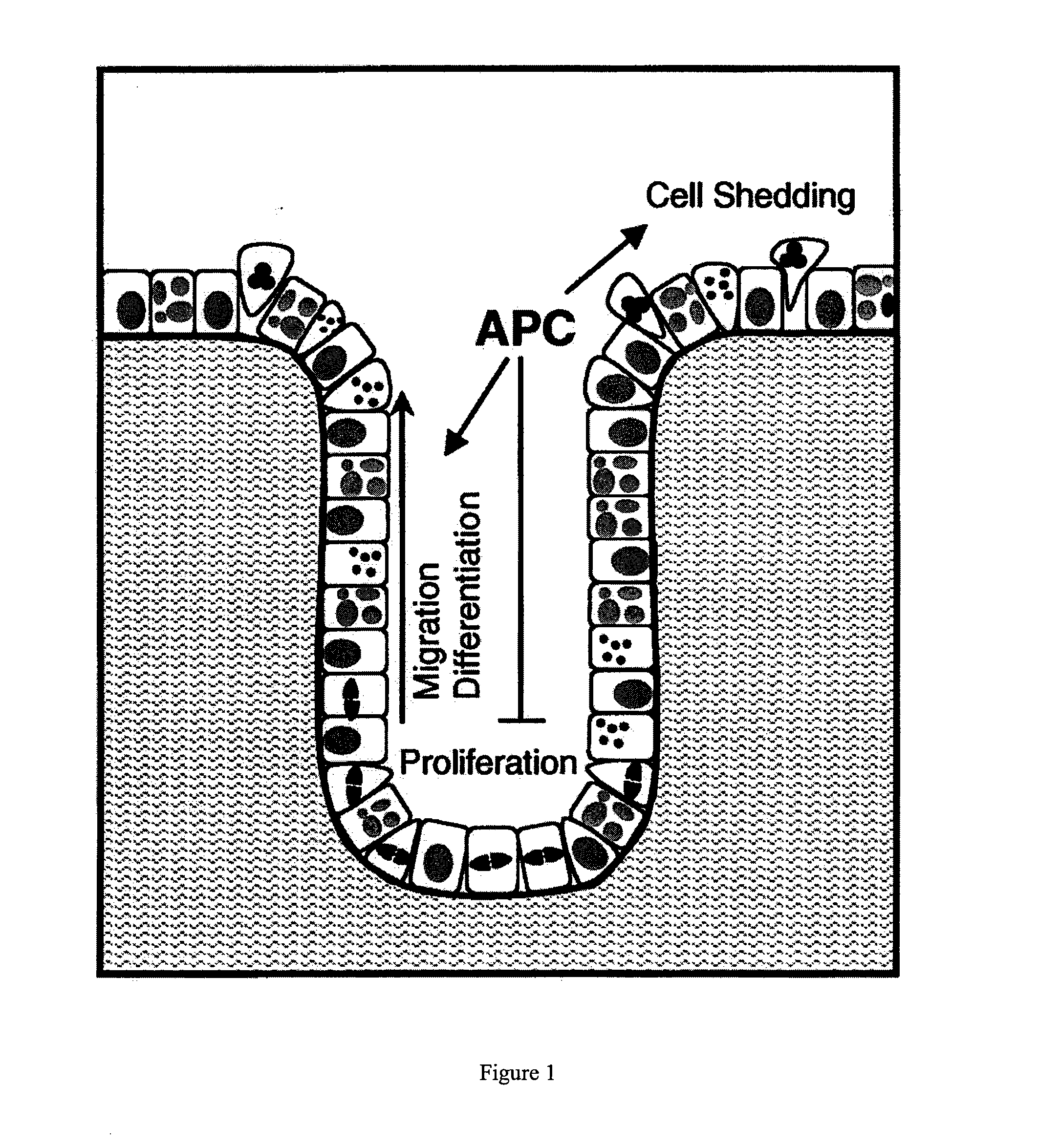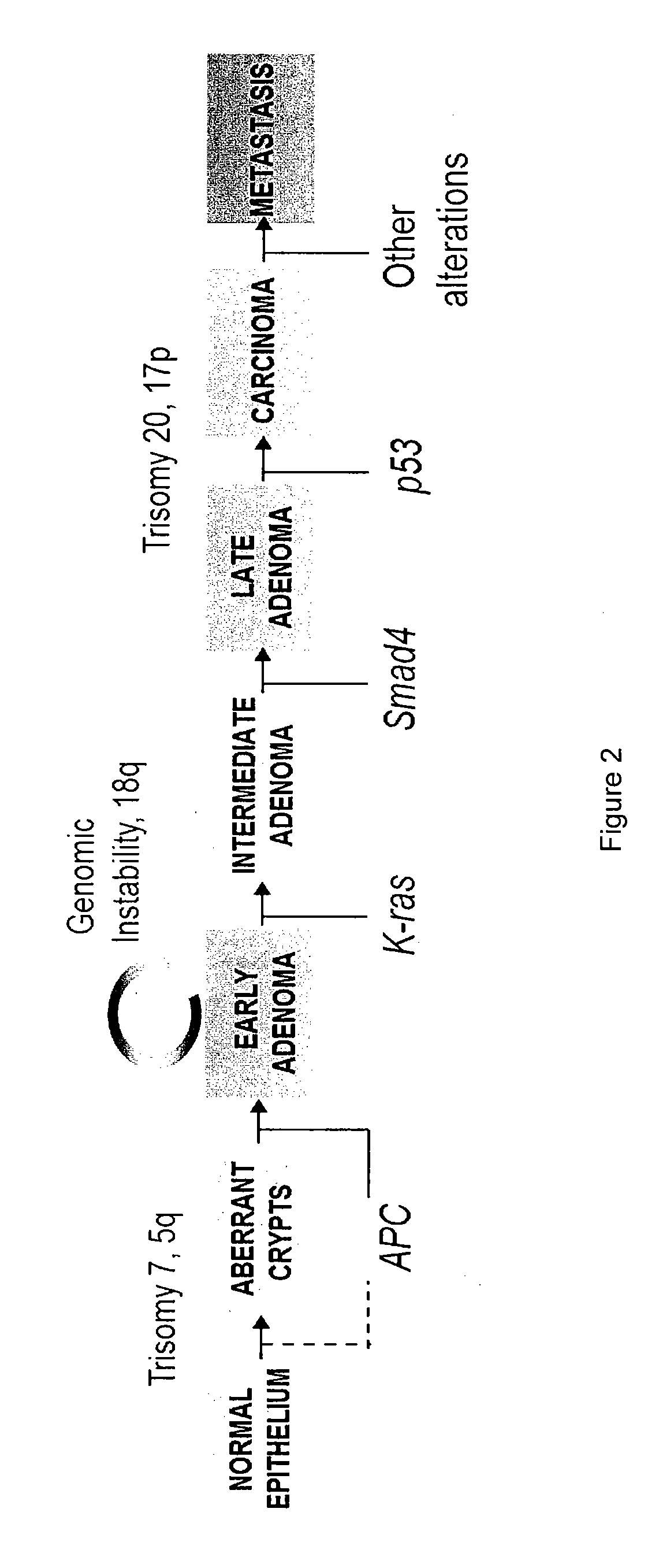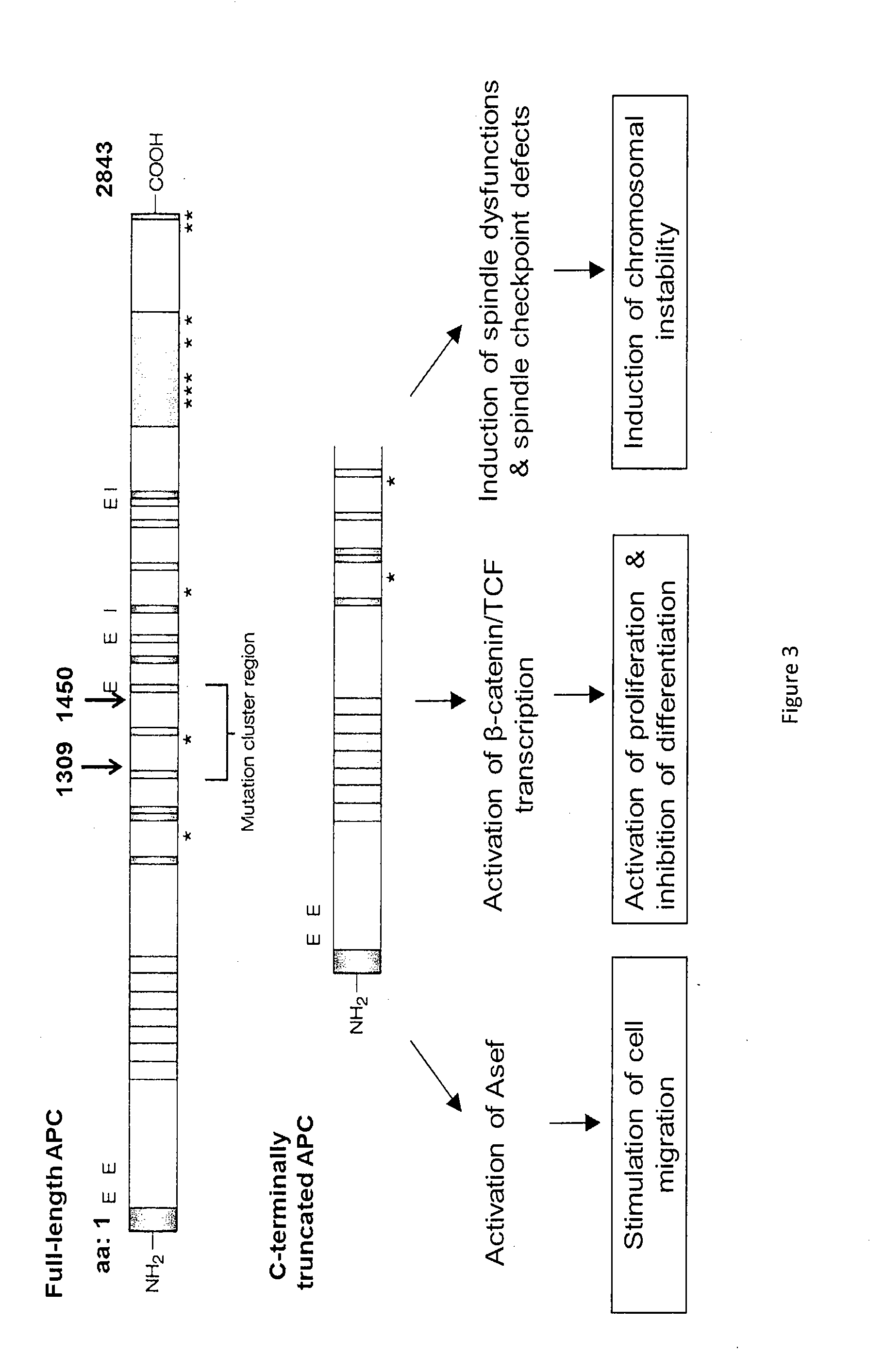Therapeutics targeting truncated adenomatous polyposis coli (APC) proteins
a technology of adenomatous polyposis coli and apc, which is applied in the field of therapeutics targeting truncated adenomatous polyposis coli (apc) proteins, can solve the problems of affecting normal cell function, few effective treatment options, and poor prognosis of chemotherapeutic agents, so as to inhibit tumor proliferation, inhibit tumor growth, and induce cell death
- Summary
- Abstract
- Description
- Claims
- Application Information
AI Technical Summary
Benefits of technology
Problems solved by technology
Method used
Image
Examples
example 1
[0259]Immortalized human colonic epithelial cell (HCEC) lines have been generated using exogenously introduced telomerase and cdk4 (Fearon, E. R. & Vogelstein, B. A genetic model for colorectal tumorigenesis. Cell 61, 759-767 (1990).). These cells are non-transformed, karyotypically diploid and have multipotent characteristics. When placed in Matrigel® in the absence of a mesenchymal feeder layer, individual cells divide and form self-organizing, crypt-like structures with a subset of cells exhibiting markers associated with mature epithelium.
Colonic Tissues
[0260]This study was approved by the institutional review board at the Dallas VA Medical center. Colon biopsies (20-30 samples, ˜0.5 cm3) from tissue not involved with endoscopically visible adenomas were obtained from patients undergoing routine screening colonoscopy after obtaining informed consent.
Growth Media and Tissue Culture Substrate
[0261]Cells were grown on basal DMEM, MEM or RPMI media (Gibco®, Hyclone, Logan, Utah) sup...
example 2
[0432]The small molecule anti-cancer compounds were evaluated for the ability to inhibit the activity of APC in an in vitro assay. Table A shows the IC50 measured for each exemplified compound.
[0433]Reagents required for the assay are: (3-[4,5-Dimethylthiazol-2-yl]-2,5-diphenyltetrazolium bromide; Thiazolyl blue; RPI corp., cat# M92050); RPMI-1640 or Medium of Choice (i.e. DMEM) without phenol red; 1M Hepes; 100 mM NaPyruvate; 1000× Gentamicin (50 mg / ml); 100× Penicillin / Streptomycin / Fungizone; 1×PBS; Triton X-100; 1N HCl and Isopropanol. To make the MTT solution (10×), MTT powder was dissolved into complete RPMI (or DMEM solution) to a final concentration of 5 mg / mL and was sterilized by filtration with a 0.2 μm filter. The MTT solubilization solution contained 10% Triton X-100, 0.1N and 80% isopropanol. MTT solution was diluted to 1× with complete medium at 12 mL per plate. The culture dishes (96 wells) were removed from the incubator and the media was...
example 3
Truncated APC Selective Inhibitor-1 (TASIN-1) Kills CRC Lines with APC Truncations while Sparing Normal Human Colonic Epithelial Cells (HCECs) and Other Cancer Cells with Wild Type (WT) APC, Interferes with Proper Mitotic Spindle Formation, and Induces JNK-Dependent Apoptotic Cell Death in APC Truncated Cells
[0435]Dose response analysis in two authentic CRC cell lines: HCT116 (WT APC) and DLD1 (truncated APC), led to identification of the lead compound TASIN-1 (truncated APC selective inhibitor) (FIG. 7 (d)). This compound exhibited potent and selective toxicity towards DLD1 cells (IC50=63 nM) but not towards HCT116 cells (IC50>10 μM) (FIG. 7(e)). Sustained treatment of TASIN-1 inhibited soft agar growth in DLD1 but not in HCT116 cells (FIG. 7 (f), 11)
[0436]To validate APC truncation dependency, two independent stable knockdown DLD1 cell lines expressing shRNAs were generated against truncated APC. Knockdown of truncated APC expression desensitized DLD1 cells to TASIN-1 with a prote...
PUM
 Login to View More
Login to View More Abstract
Description
Claims
Application Information
 Login to View More
Login to View More - R&D
- Intellectual Property
- Life Sciences
- Materials
- Tech Scout
- Unparalleled Data Quality
- Higher Quality Content
- 60% Fewer Hallucinations
Browse by: Latest US Patents, China's latest patents, Technical Efficacy Thesaurus, Application Domain, Technology Topic, Popular Technical Reports.
© 2025 PatSnap. All rights reserved.Legal|Privacy policy|Modern Slavery Act Transparency Statement|Sitemap|About US| Contact US: help@patsnap.com



